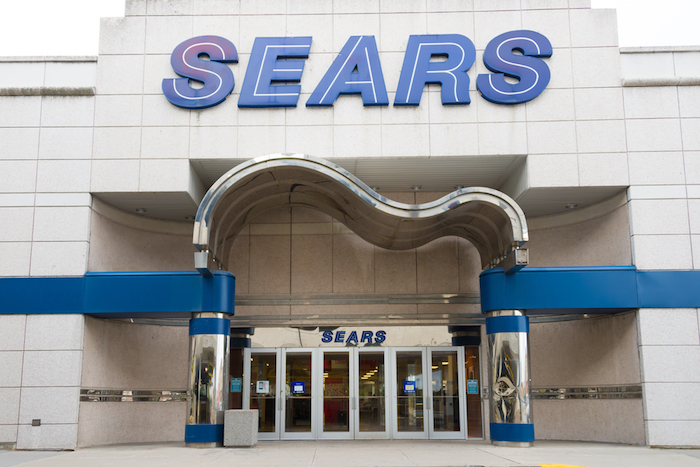Retail Pulse: More Closures And In-House Brand Sales For Sears

Things are not looking good for Sears as 63 more stores hit the chopping block — although, if one is looking for a silver lining, that number was initially supposed to be 72. However, the retailer has identified 100 unprofitable Sears and Kmart stores, meaning even more closures could be in its future if those locations don’t start performing better.
Sears has not been profitable since 2010 and has seen 26 straight quarters of shrinking sales. Revenue fell 31 percent this past quarter, and only some of that can be blamed on declines due to previous store closings. Same-store sales still plunged by 12 percent, losing another $424 million for Sears Holdings. Since 2010, the holding company — which owns Sears and Kmart – has lost more than $11.2 billion.
The company has already closed almost 400 Sears and Kmart stores in the past calendar year, leaving it with 894 locations — including the 63 closures announced Thursday (May 31). That’s down dramatically from a height of 3,500 locations between Kmart and Sears when the two merged in 2005.
This latest batch of closures will include 48 Sears stores and 15 Kmarts across 29 states, including Georgia, Illinois, Indiana and Michigan, according to CNN Money. The closures come on the heels of efforts to keep the Sears brand afloat by selling brands and spinning off divisions to generate quick cash flow, as well as asking creditors to agree to longer debt repayment schedules.
The company said earlier this month that it’s looking into selling its in-house appliance brand Kenmore — and that’s after selling off its in-house tool brand Craftsman last year to Stanley Black & Decker, a deal that brought in $900 million. It’s likely that Sears CEO Eddie Lampert will end up buying Kenmore. He was the one who advised the company to consider a sale. At the time, he also offered to buy the brand himself, along with other assets, including the company’s parts business and home services businesses, if necessary. Considering that Sears has previously looked into a possible Kenmore sale but failed to find a buyer, Lampert’s purchase may indeed become “necessary.”
As for Craftsman, its tools are now available from Lowe’s in addition to remaining in Sears stores, possibly signaling that some of the brands Sears created could outlast the big-box retailer itself.
In Other Brick-And-Mortar News
Apple announced a rare store closure in Atlantic City, New Jersey, citing a sharp decline in tourism and area visitors. It’s rare for the tech giant to close a store without relocating it, Fortune noted, but the company said in a statement that it has various other stores throughout the southern New Jersey, Delaware Valley and Greater Philadelphia areas, which can continue to serve that consumer base.
Apple has just 500 stores globally, compared to Sears’ peak of 3,500. A smaller overall footprint, paired with strategic closings like this when stores become unprofitable, could help the tech giant avoid a situation where it has to close many stores at once if it ever falls out of favor in the future (not that that seems likely, the way things look today).
Likewise, Albertsons said this week that it will close a Safeway and an Albertsons due to increasing costs of meeting city regulations. The closings — a Safeway in Greenwood and an Albertsons on Seattle’s Aurora Avenue North — will take place June 16, reports The Seattle Times. Both Safeway and Albertsons are held by AB Acquisition.
Gap says it will be doubling openings of new Old Navy stores this year, having opened 30 new stores in fiscal 2017. Forbes reports that Old Navy contributed to nearly half the company’s total sales last fiscal year. Affordability of merchandise seems to be a driving factor of its success.
Although the company continues to close Gap and Banana Republic locations, it’s hanging its hopes on growing Old Navy — an “under-penetrated” brand — to increase revenues.